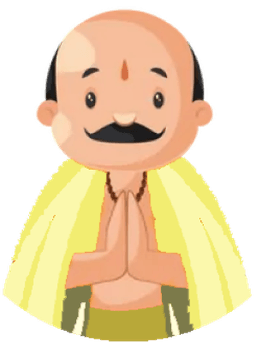Durga Asthami and Durga Navami: Date, Puja Timings, Celebrations

Durga Ashtami 2024 Date
Ashtami falls on October 11 and Navami falls on October 12, the next day, during the Durga Puja of 2024. On Saturday, October 13, Vijaydhasmi/Dusshera will be observed, and on the same day, the five-day festivities will end with the immersion of Goddess Durga.
Ashtami falls on October 11 and Navami falls on October 12, the next day, during the Durga Puja of 2024. On Saturday, October 13, Vijaydhasmi/Dusshera will be observed, and on the same day, the five-day festivities will end with the immersion of Goddess Durga.
Rituals and Celebrations
On Durga Asthami, devotees engage in various rituals to honor Goddess Durga. During these days, people worship feminine energy, delve into the sacredness of the ritual, and cleanse their souls by keeping fasts and reading Durga Saptashri. Devotees often perform "Sandhi Puja," which takes place at the juncture of Ashtami and Navami. During the ritual, devotees learn about the fiercest battle the goddess had against Demon Mahisasura and her victory over evil. Devotees observe fast and abstain from all the illicit things that aid in negative energy. Special prayers and chants are recited, invoking the blessings of the goddess. Durga Navami is a day of celebration and joy. It signifies the conclusion of Navratri. The day also involves rituals such as "Navami Homa," where offerings are made to the Goddess for her blessings.
On Durga Asthami, devotees engage in various rituals to honor Goddess Durga. During these days, people worship feminine energy, delve into the sacredness of the ritual, and cleanse their souls by keeping fasts and reading Durga Saptashri. Devotees often perform "Sandhi Puja," which takes place at the juncture of Ashtami and Navami. During the ritual, devotees learn about the fiercest battle the goddess had against Demon Mahisasura and her victory over evil. Devotees observe fast and abstain from all the illicit things that aid in negative energy. Special prayers and chants are recited, invoking the blessings of the goddess. Durga Navami is a day of celebration and joy. It signifies the conclusion of Navratri. The day also involves rituals such as "Navami Homa," where offerings are made to the Goddess for her blessings.
Celebrations in different regions
In some regions, particularly in North India, this day is celebrated as "Vijaya Dashami/Dusshera," marking the end of Durga Puja and symbolizing the victory of good over evil. Majorily in North India, devotees follow the process of Kanjak or Kanya Puja, the little girls are treated as form of Goddess Durga. Followers of Durga Maa perform Kumari Puja on either Ashtami or Navami. The Drik Panchang mentions Kumari Puja on the Ashtami date. However, the selection of the day for Kumari Puja should be done according to the traditions of one's family and lineage. In many regions, especially in West Bengal, elaborate processions are held, showcasing beautifully crafted idols of Goddess Durga. In rural areas, it is common to see processions where idols are immersed in water bodies, symbolizing the return of Goddess Durga to her celestial abode. The festival also emphasizes environmental consciousness. Many communities are now opting for eco-friendly idols made from natural materials to minimize pollution during idol immersion. In Gujarat, people perform folk dance garba and wear colourful clothes, known as Astra Puja to worship weapons by Devi.
In some regions, particularly in North India, this day is celebrated as "Vijaya Dashami/Dusshera," marking the end of Durga Puja and symbolizing the victory of good over evil. Majorily in North India, devotees follow the process of Kanjak or Kanya Puja, the little girls are treated as form of Goddess Durga. Followers of Durga Maa perform Kumari Puja on either Ashtami or Navami. The Drik Panchang mentions Kumari Puja on the Ashtami date. However, the selection of the day for Kumari Puja should be done according to the traditions of one's family and lineage. In many regions, especially in West Bengal, elaborate processions are held, showcasing beautifully crafted idols of Goddess Durga. In rural areas, it is common to see processions where idols are immersed in water bodies, symbolizing the return of Goddess Durga to her celestial abode. The festival also emphasizes environmental consciousness. Many communities are now opting for eco-friendly idols made from natural materials to minimize pollution during idol immersion. In Gujarat, people perform folk dance garba and wear colourful clothes, known as Astra Puja to worship weapons by Devi.
































































































